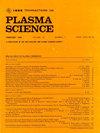Neural Network-Based Defect Detection on Tomography Images for Quality Control of Inertial Fusion Capsules
IF 1.3
4区 物理与天体物理
Q3 PHYSICS, FLUIDS & PLASMAS
引用次数: 0
Abstract
Recent headlines of record-breaking fusion energy yields using inertial confinement have led to a growing interest in the metrology processes used to inspect the high-density carbon (HDC) capsules that have achieved these yields. To ensure the highest quality HDC shells, the tomographic reconstructions are reviewed for defects to satisfy a certain standard of quality. Historically, a human expert would visually analyze HDC tomography data searching for defects, which is very time-consuming and labor-intensive. While classical computer vision (CCV) methods have also been employed, machine-learning methods have demonstrated the ability to analyze vast amounts of data at high speeds and more robustly identify patterns and anomalies that may indicate the presence of previously undetectable defects. Presented here is our novel process, ShellNet, that has been developed to automate this defect detection task on HDC shells using convolutional neural networks (CNNs); the challenges and limitations of this approach are also discussed. A machine-learning model trained on thousands of expert-labeled defects and tomography images, utilizing a custom labeling tool, is now being used in production. Case studies are presented, demonstrating the effectiveness of machine learning in this application, as well as outlines for future research in this area. Overall, machine learning has been shown to be an effective method in enhancing the quality-based selection process of HDC shells, even exceeding the recall performance of human-labeled data. These improvements promise to lead to overall improved reliability of HDC materials in inertial fusion technology.求助全文
约1分钟内获得全文
求助全文
来源期刊

IEEE Transactions on Plasma Science
物理-物理:流体与等离子体
CiteScore
3.00
自引率
20.00%
发文量
538
审稿时长
3.8 months
期刊介绍:
The scope covers all aspects of the theory and application of plasma science. It includes the following areas: magnetohydrodynamics; thermionics and plasma diodes; basic plasma phenomena; gaseous electronics; microwave/plasma interaction; electron, ion, and plasma sources; space plasmas; intense electron and ion beams; laser-plasma interactions; plasma diagnostics; plasma chemistry and processing; solid-state plasmas; plasma heating; plasma for controlled fusion research; high energy density plasmas; industrial/commercial applications of plasma physics; plasma waves and instabilities; and high power microwave and submillimeter wave generation.
 求助内容:
求助内容: 应助结果提醒方式:
应助结果提醒方式:


